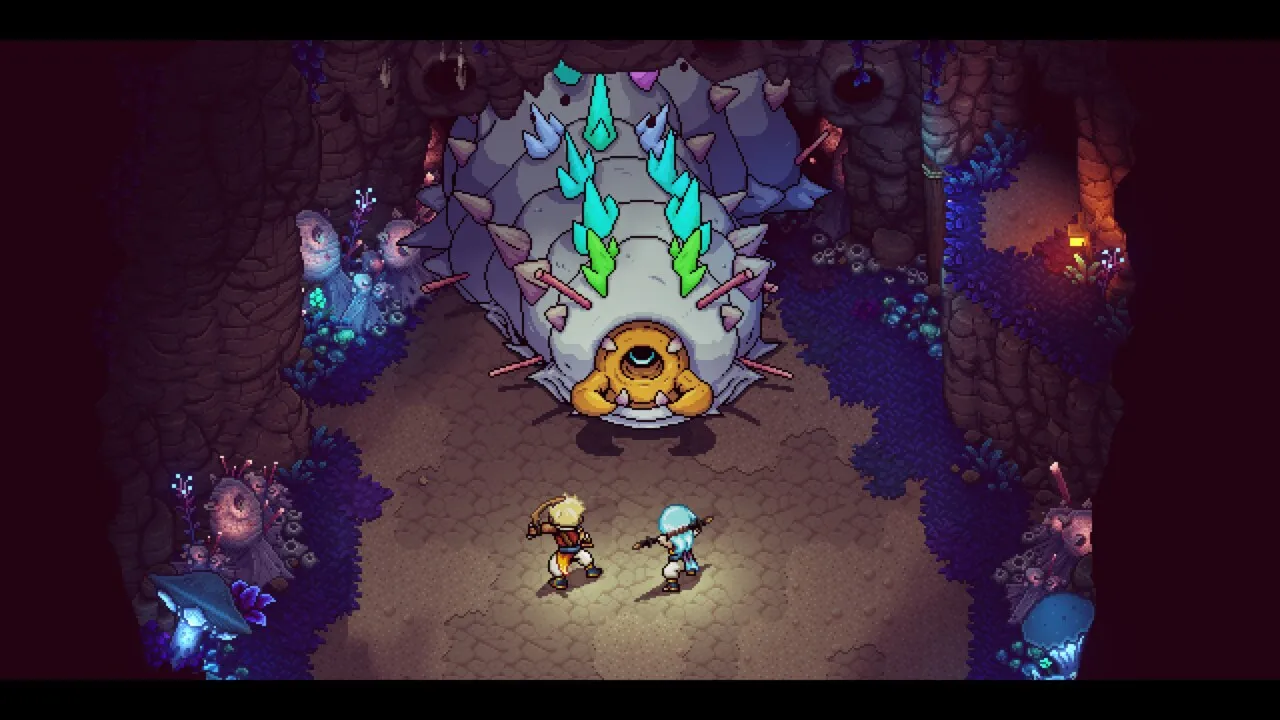
Sea of Stars: A Retro JRPG Odyssey Shines Bright Despite Narrative Flaws
Contents
Sea of Stars, the highly anticipated follow-up to Sabotage Studio’s acclaimed The Messenger, arrived in late August 2023 after a Kickstarter campaign that garnered over CAD$1.6 million. Promising a grander scale and richer experience than its predecessor, Sea of Stars entered a crowded field of 2023 game releases, including heavy hitters like The Legend of Zelda: Tears of the Kingdom, Hogwarts Legacy, and Baldur’s Gate 3. Does this indie RPG manage to hold its own against such stiff competition? Let’s dive in.
 Sea of Stars – Gameplay
Sea of Stars – Gameplay
A Love Letter to Classic JRPGs
Heavily inspired by the SNES classic Chrono Trigger, Sea of Stars evokes a strong sense of nostalgia from the very first frame. The game embraces retro elements like pixel art visuals, turn-based combat, and a familiar chosen-one narrative. However, it also incorporates modern refinements to make the experience more accessible and streamlined, addressing common JRPG pitfalls.
The combat system, reminiscent of Super Mario RPG with touches of Chrono Trigger, offers dynamic turn-based action. Players control a party of characters and can choose the order in which they act. Each character acts once per turn, with enemy turns indicated by a counter next to their health bar. Players can choose from four actions: basic attacks, skills, combo techniques, and item usage. Basic attacks regenerate MP (used for skills) and generate Live Mana, which enhances basic attacks with added damage and effects. Skills offer special effects like healing or magic damage, while combo techniques are powerful team-based attacks that consume Combo points.
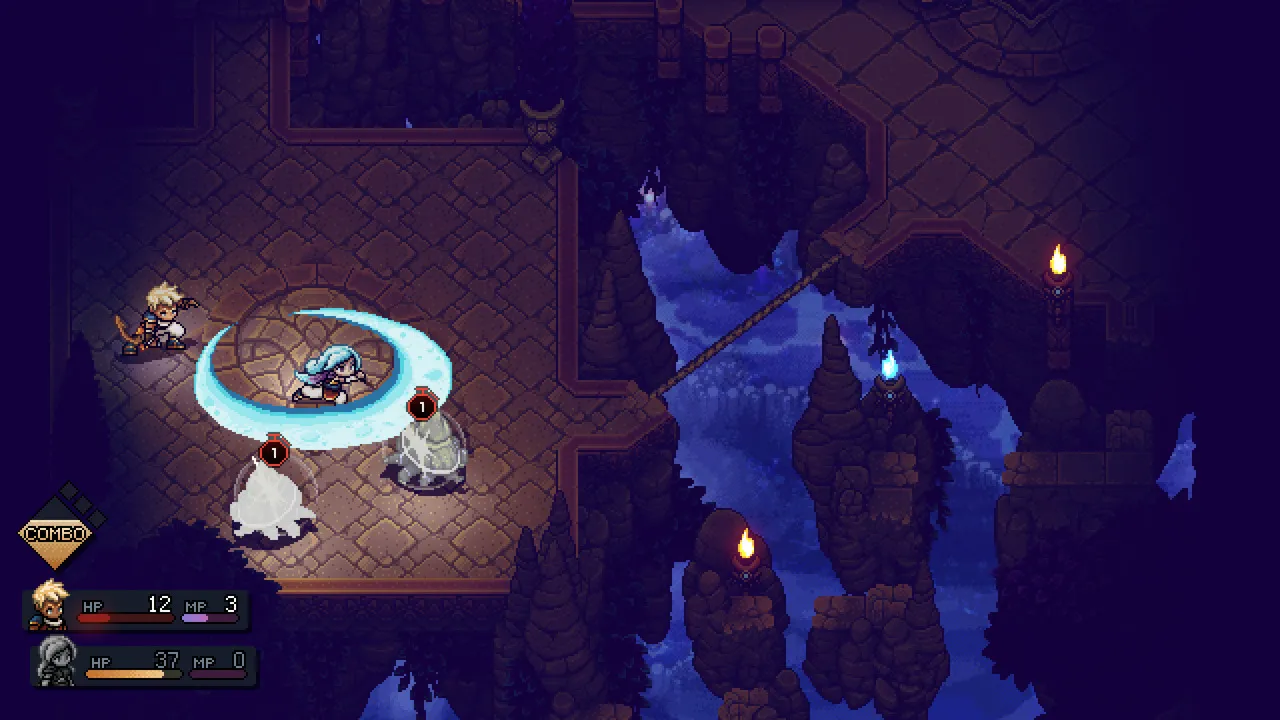 Sea of Stars – CombatA timing-based element adds a layer of strategy, allowing players to enhance attacks or defend more effectively by pressing buttons at the right moment. The “Lock” system, where enemies display icons indicating the types of damage needed to interrupt their attacks, keeps battles engaging. Successfully inflicting the required damage weakens or completely cancels enemy attacks, demanding careful planning and resource management.
Sea of Stars – CombatA timing-based element adds a layer of strategy, allowing players to enhance attacks or defend more effectively by pressing buttons at the right moment. The “Lock” system, where enemies display icons indicating the types of damage needed to interrupt their attacks, keeps battles engaging. Successfully inflicting the required damage weakens or completely cancels enemy attacks, demanding careful planning and resource management.
Character roles are well-defined, each possessing a distinct set of abilities. Zale deals sun-based and slashing damage, Valere specializes in moon-based and blunt damage, and Garl provides support with healing and enemy repositioning. Team composition and strategy are crucial for success. The absence of random encounters allows players to avoid unwanted battles, focusing on exploration and story progression. Relics, purchasable throughout the game, offer further customization by adjusting gameplay parameters like enemy damage reduction and auto-guarding. This eliminates the need for difficulty selection, catering to a wider range of players.
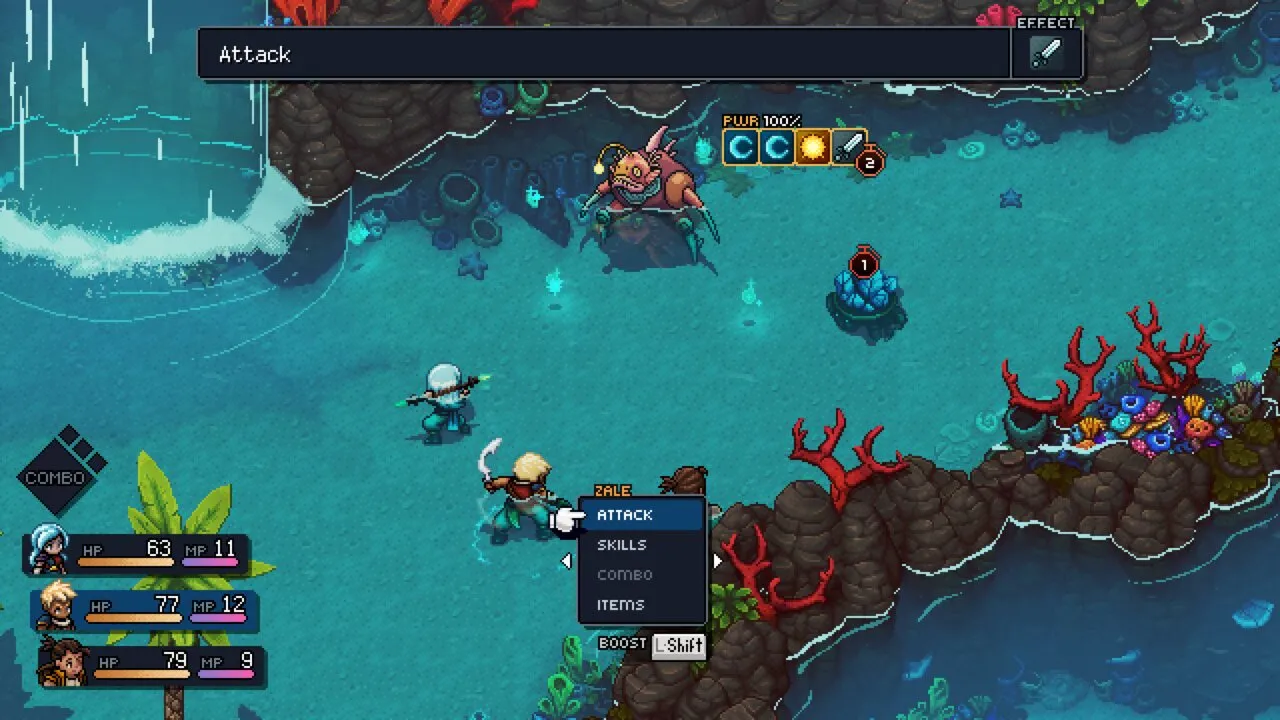 Sea of Stars – ExplorationSea of Stars excels in level design and world-building, offering engaging puzzles that reward exploration with valuable items and lore snippets. The interconnected world and cleverly designed dungeons evoke a sense of wonder and satisfaction, reminiscent of Golden Sun.
Sea of Stars – ExplorationSea of Stars excels in level design and world-building, offering engaging puzzles that reward exploration with valuable items and lore snippets. The interconnected world and cleverly designed dungeons evoke a sense of wonder and satisfaction, reminiscent of Golden Sun.
A Feast for the Eyes and Ears
Sea of Stars elevates pixel art to a new level. The vibrant world is brought to life with meticulous detail, showcasing the unique characteristics and history of each location. Animations are fluid and expressive, from character movements to environmental details like swaying trees and rippling water. The lighting and shadow effects are particularly impressive, adding depth and atmosphere to the pixelated world.
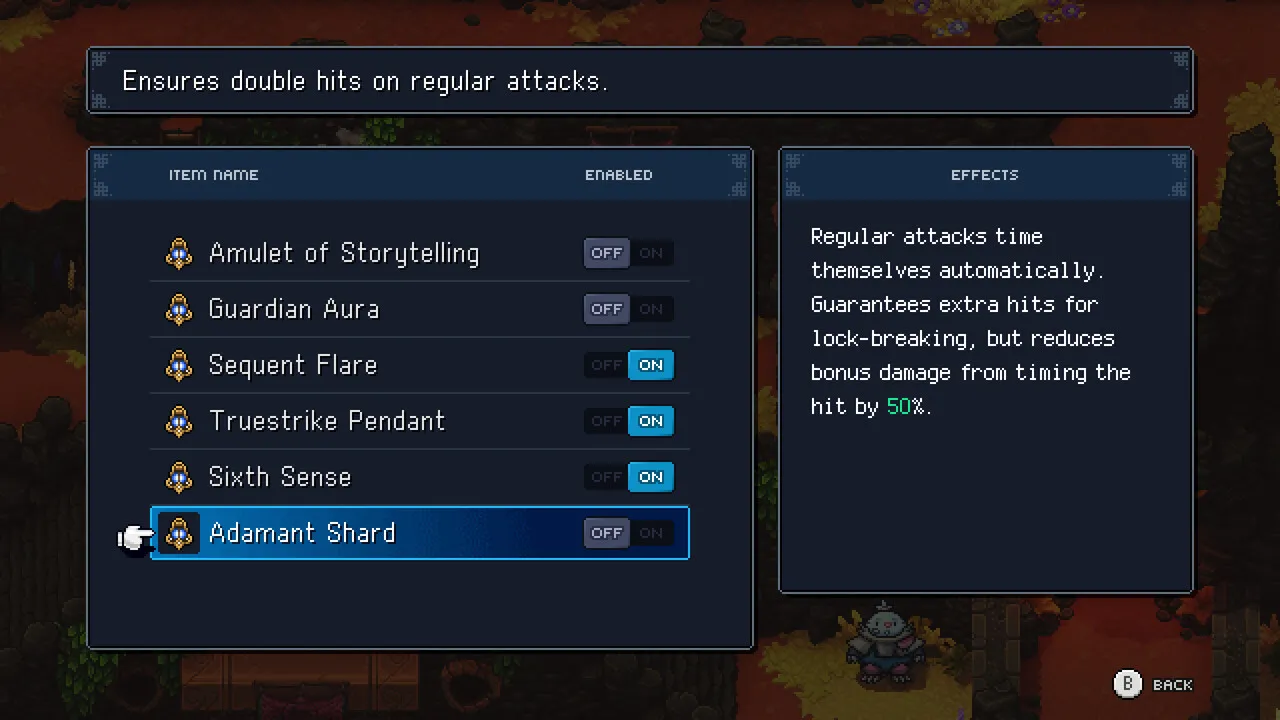 Sea of Stars – EnvironmentThe soundtrack, featuring contributions from Yasunori Mitsuda (Chrono Trigger, Xenogears) alongside composer Eric W. Brown, blends classic JRPG melodies with modern sensibilities, creating a memorable and evocative auditory experience.
Sea of Stars – EnvironmentThe soundtrack, featuring contributions from Yasunori Mitsuda (Chrono Trigger, Xenogears) alongside composer Eric W. Brown, blends classic JRPG melodies with modern sensibilities, creating a memorable and evocative auditory experience.
A Narrative That Falls Short
Despite its strengths in gameplay, visuals, and music, Sea of Stars falters in its narrative and character development. The story, following the familiar trope of two Solstice Warriors destined to defeat an evil entity, becomes bogged down in lengthy exposition and meandering plotlines. The initial hours feel slow-paced, with excessive dialogue that doesn’t effectively establish the world or its characters.
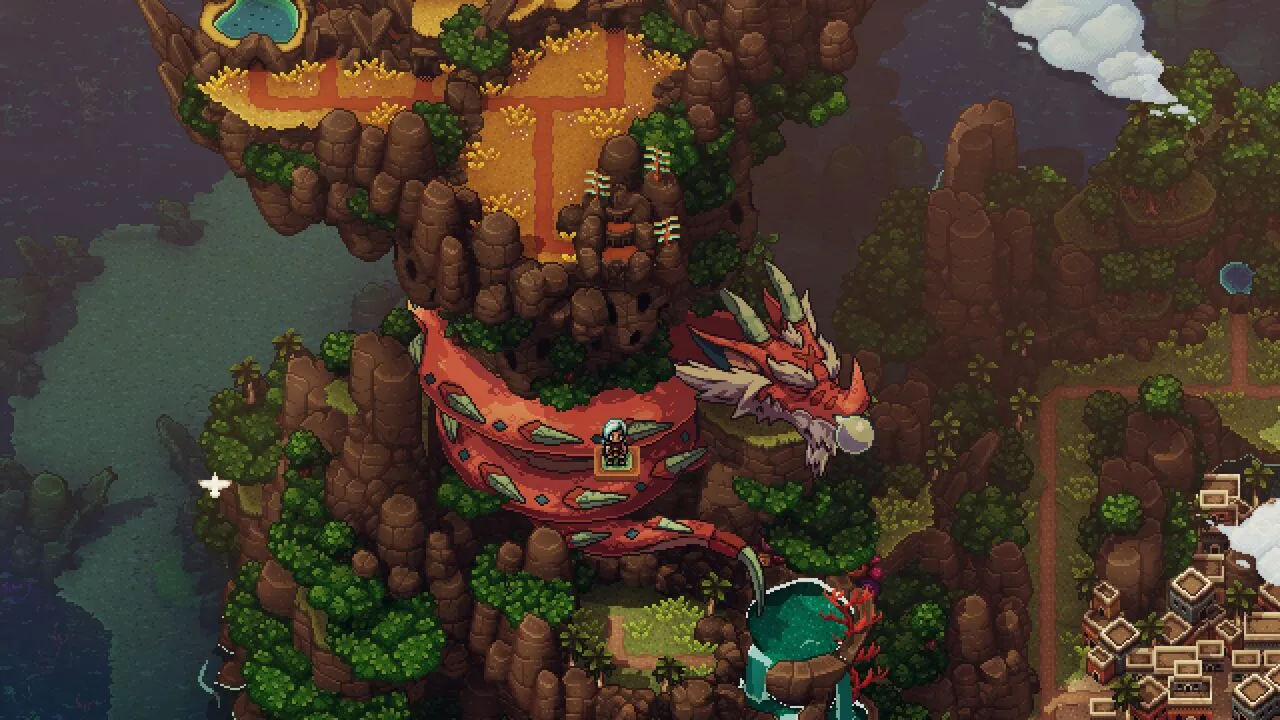 Sea of Stars – Character InteractionCharacter development is also lacking, with many characters feeling one-dimensional and lacking distinct personalities. The overly cheerful and positive tone, while fitting the game’s aesthetic, hinders the development of meaningful relationships and emotional depth. The lack of strong connections between party members makes it difficult to invest in their struggles or triumphs.
Sea of Stars – Character InteractionCharacter development is also lacking, with many characters feeling one-dimensional and lacking distinct personalities. The overly cheerful and positive tone, while fitting the game’s aesthetic, hinders the development of meaningful relationships and emotional depth. The lack of strong connections between party members makes it difficult to invest in their struggles or triumphs.
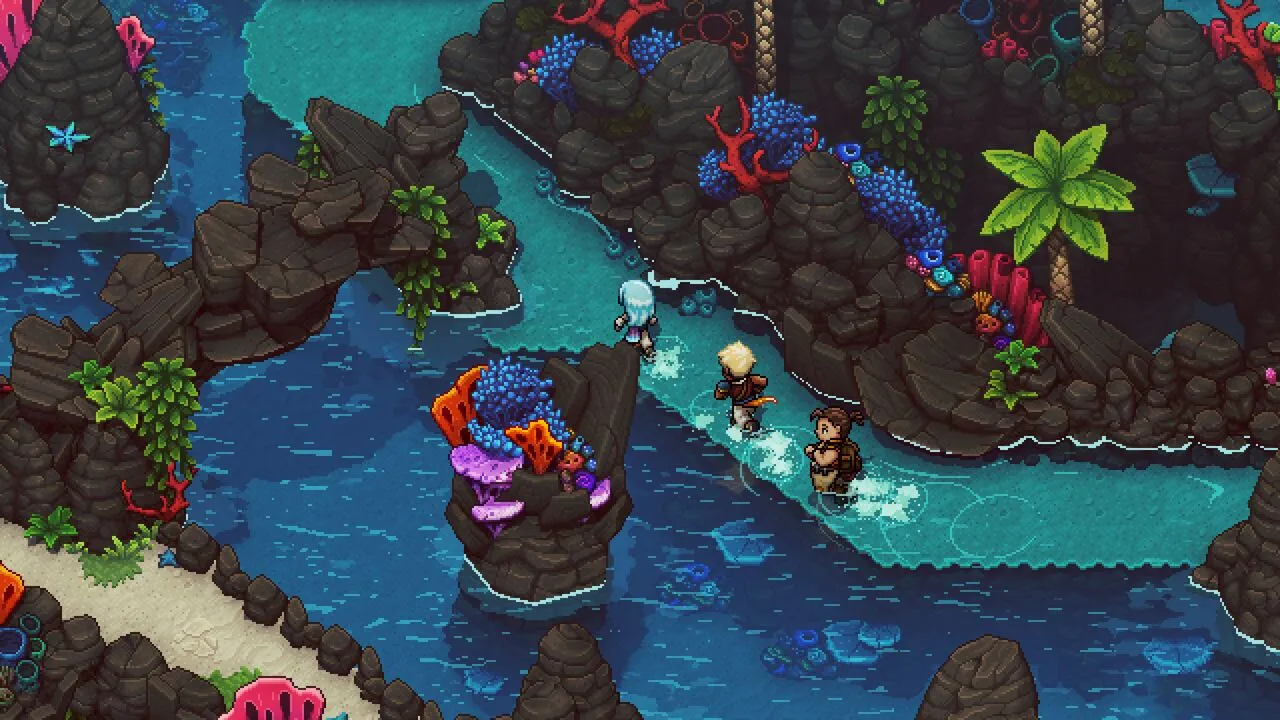 Sea of Stars – Scenic ViewIronically, the game’s world-building, through environmental storytelling and lore snippets, is far more compelling than the main narrative. The rich history and mythology hinted at throughout the game offer glimpses of a fascinating world, overshadowed by the lackluster main plot.
Sea of Stars – Scenic ViewIronically, the game’s world-building, through environmental storytelling and lore snippets, is far more compelling than the main narrative. The rich history and mythology hinted at throughout the game offer glimpses of a fascinating world, overshadowed by the lackluster main plot.
 Sea of Stars – Story Moment
Sea of Stars – Story Moment
Conclusion
Sea of Stars ultimately delivers a captivating gameplay experience, steeped in nostalgia and polished to a brilliant sheen. While the narrative and character development fall short of its potential, the engaging combat, stunning visuals, and enchanting soundtrack make it a worthwhile journey for JRPG fans. The game’s strengths lie in its execution of classic mechanics and its dedication to creating a beautiful and immersive world. While the story may not resonate as deeply as its predecessors, Sea of Stars shines as a testament to the enduring appeal of retro JRPGs.





Comments (0)